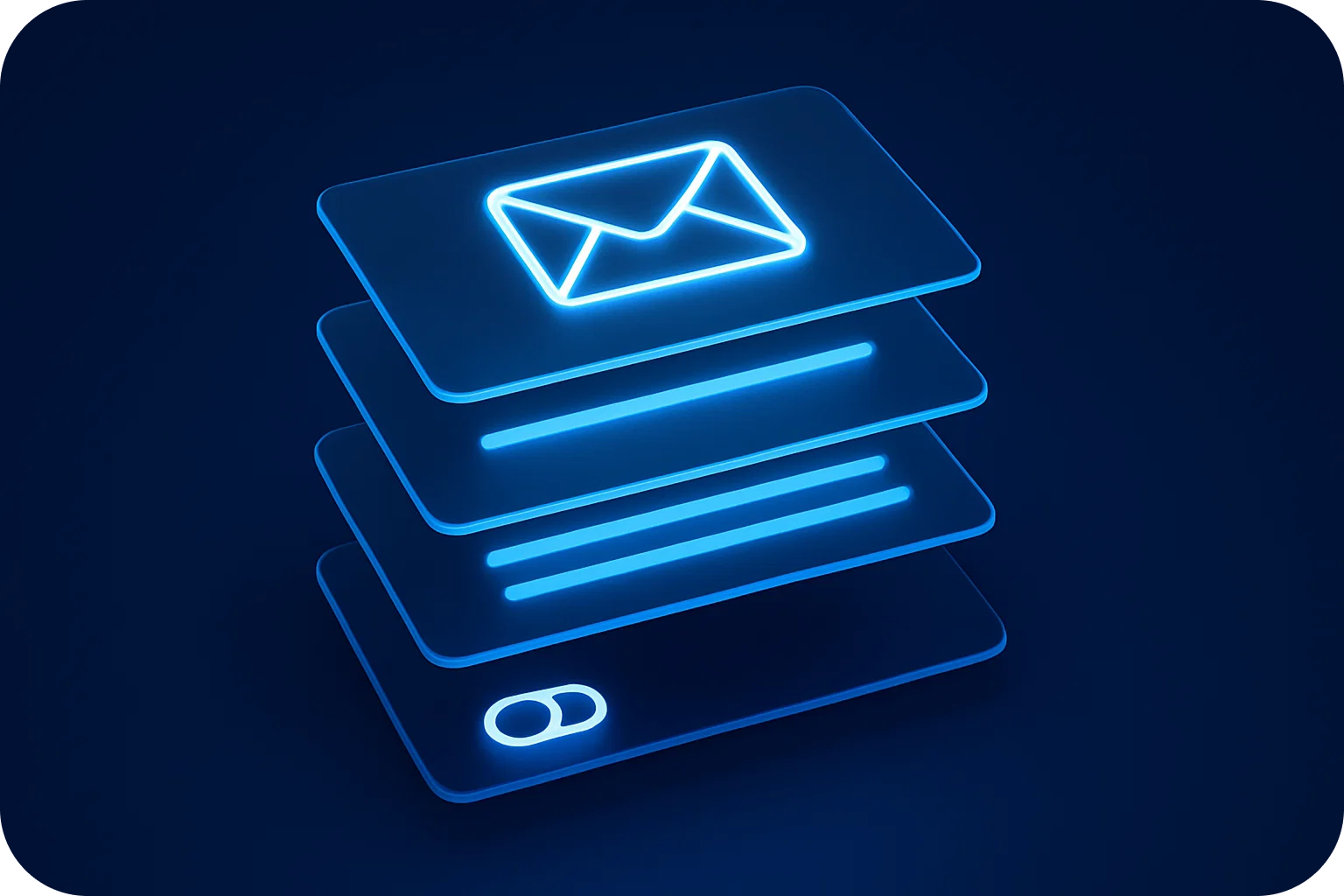Cold Email for Bootstrapped Startups: Maximum Impact on Minimum Budget

When you're bootstrapping a startup, every dollar counts. You don't have the luxury of massive marketing budgets, expensive sales tools, or a full SDR team. But here's the good news: cold email remains one of the most cost-effective channels for customer acquisition—if you do it right.
The challenge isn't just sending emails. It's about maximizing impact while minimizing spend, maintaining deliverability, and building a sustainable outreach system that scales with your growth. Let's break down exactly how bootstrapped startups can leverage cold email to drive real revenue without breaking the bank.
Why Cold Email Works for Bootstrapped Startups
Cold email levels the playing field. Unlike paid advertising that rewards the biggest budgets, email outreach rewards strategy, precision, and persistence. With the right approach, a solo founder can reach the same decision-makers as a well-funded competitor—often with better results.
The economics are compelling: For the cost of a few coffee meetings, you can build an infrastructure that reaches hundreds of qualified prospects per week. The key is understanding that effective cold email isn't about volume alone—it's about strategic targeting combined with compelling messaging.
Building Your Foundation: Infrastructure That Won't Break the Bank
Before you send a single email, you need the right infrastructure. Many startups make the costly mistake of using their primary domain for cold outreach, risking their entire email reputation. Instead, invest in a proper setup from day one.
Start with dedicated sending domains. Purchase 2-3 domains similar to your main domain (think variations like "getmailpool.ai" or "trymailpool.ai" if your main domain is "mailpool.ai"). This protects your primary domain while giving you the capacity to scale.
Choose the right email provider. Google Workspace and Microsoft 365 are industry standards for good reason—they offer strong deliverability and professional credibility. For bootstrapped startups, shared IP mailboxes at around $3-4 per month offer an excellent entry point. You can scale to dedicated IPs later as your volume increases.
Warm up methodically. This is non-negotiable. New email accounts need 3-4 weeks of gradual warm-up before full-scale sending. Start with 5-10 emails per day and gradually increase. Skipping this step to save time will cost you far more in damaged reputation and lost opportunities.
Smart Targeting: Quality Over Quantity
With limited resources, you cannot afford to waste sends on unqualified prospects. Every email should go to someone who genuinely fits your ideal customer profile.
Define your ICP with surgical precision. Go beyond basic demographics. What specific pain points does your product solve? What triggers would make someone actively search for your solution? What job titles have budget authority? The tighter your targeting, the higher your conversion rates.
Build lists strategically. You don't need expensive data providers when you're starting out. LinkedIn Sales Navigator offers robust filtering for around $80/month. Combine this with free tools like Hunter.io for email verification, and you can build highly targeted lists without massive data costs.
Prioritize account quality over list size. A list of 200 perfectly matched prospects will outperform 2,000 loosely qualified contacts every time. Focus on companies showing buying signals: recent funding, job postings for relevant roles, technology stack changes, or public announcements indicating growth.
Crafting Messages That Convert
Your message is where strategy meets execution. With limited budget, you can't afford to waste opportunities with generic templates.
Lead with relevance, not features. Your prospects don't care about your product—they care about their problems. Open with a specific observation about their business, a pain point you've identified, or a relevant insight. Show that you've done your homework.
Keep it concise and scannable. Busy decision-makers skim emails in seconds. Aim for 50-125 words maximum. Use short paragraphs, clear language, and a single, specific call-to-action. If they need to scroll, you've already lost them.
Personalize at scale intelligently. True one-to-one personalization doesn't scale for bootstrapped startups. Instead, use "smart personalization"—segment your list by specific criteria (industry, role, company size) and craft tailored messages for each segment. This gives you 80% of the benefit at 20% of the effort.
Test relentlessly. A/B test subject lines, opening hooks, CTAs, and email length. Even small improvements in open and reply rates compound dramatically over time. With cold email, data beats intuition every time.
Maximizing Deliverability on a Budget
The best message in the world is worthless if it lands in spam. Deliverability is your most critical metric, yet it's often overlooked by budget-conscious startups.
Respect sending limits. Never exceed 50-100 emails per inbox per day, and ideally stay around 20-30 for optimal deliverability. Use multiple inboxes across multiple domains to scale volume while maintaining sender reputation.
Perfect your technical setup. Ensure SPF, DKIM, and DMARC records are properly configured for every sending domain. Use a custom tracking domain to avoid shared domain reputation issues. These technical details seem tedious but directly impact whether your emails reach the inbox.
Monitor your metrics obsessively. Track open rates, reply rates, bounce rates, and spam complaints. A sudden drop in opens signals deliverability issues. Catch problems early before they damage your sender reputation permanently.
Maintain list hygiene. Remove hard bounces immediately. Suppress unsubscribes and anyone who marks you as spam. Clean lists protect your infrastructure and improve overall performance.
Scaling Strategically Without Scaling Costs
As you gain traction, scale intelligently. The goal is to increase output without proportionally increasing costs or complexity.
Add inboxes gradually. Start with 3-5 email accounts. As you master the process and see consistent results, add more. Each inbox can handle 20-30 emails daily, giving you 100-150 daily sends with just five accounts—enough to reach 3,000+ prospects monthly.
Automate the repetitive, personalize the important. Use affordable outreach tools like Instantly, Lemlist, or Smartlead (typically $30-100/month) to automate sending, follow-ups, and basic tracking. But always personally review replies and handle conversations manually. Automation should free up time for high-value activities, not replace human judgment.
Implement a follow-up sequence. Most responses come from follow-ups, not initial emails. Create a 3-4 touch sequence spaced 3-5 days apart. Each follow-up should add value—share a relevant resource, offer a different angle, or provide social proof. Persistence pays, but only when combined with value.
Measuring What Matters
Track metrics that actually correlate with revenue, not vanity numbers.
Reply rate is your north star. Aim for 5-10% positive reply rates. Anything below 2% signals a fundamental problem with targeting or messaging. Above 10% means you've found product-market fit in your outreach.
Monitor cost per meeting and cost per customer. Calculate your total monthly outreach costs (tools, domains, time) divided by meetings booked and customers acquired. This tells you whether cold email is truly cost-effective for your business.
Track deliverability indicators. Maintain open rates above 40% and bounce rates below 5%. These metrics indicate healthy infrastructure and list quality.
The Bootstrapped Advantage
Ironically, limited resources can be an advantage. You're forced to be strategic, to test rigorously, and to focus on what actually drives results. Well-funded competitors often waste money on scale before they've perfected their approach.
Start small, measure everything, and scale what works. With cold email, a bootstrapped startup with smart strategy can outperform competitors with 10x the budget. The key is treating it as a strategic channel requiring thoughtful execution, not just another marketing tactic to throw money at.
Your constraint isn't budget—it's focus. Master the fundamentals, respect best practices, and let your results compound over time. That's how bootstrapped startups turn cold email into their most profitable acquisition channel.
More articles
Get started now




%201.png)





